Sogoro - a hero for all ages
The bravery of 17th century farmer Sakura Sogoro inspired Japan’s first modern political kabuki play and has been portrayed by the finest 19th century print makers. Frank Milner takes a closer look at the legend of Sogoro and why his story resonates over the centuries.
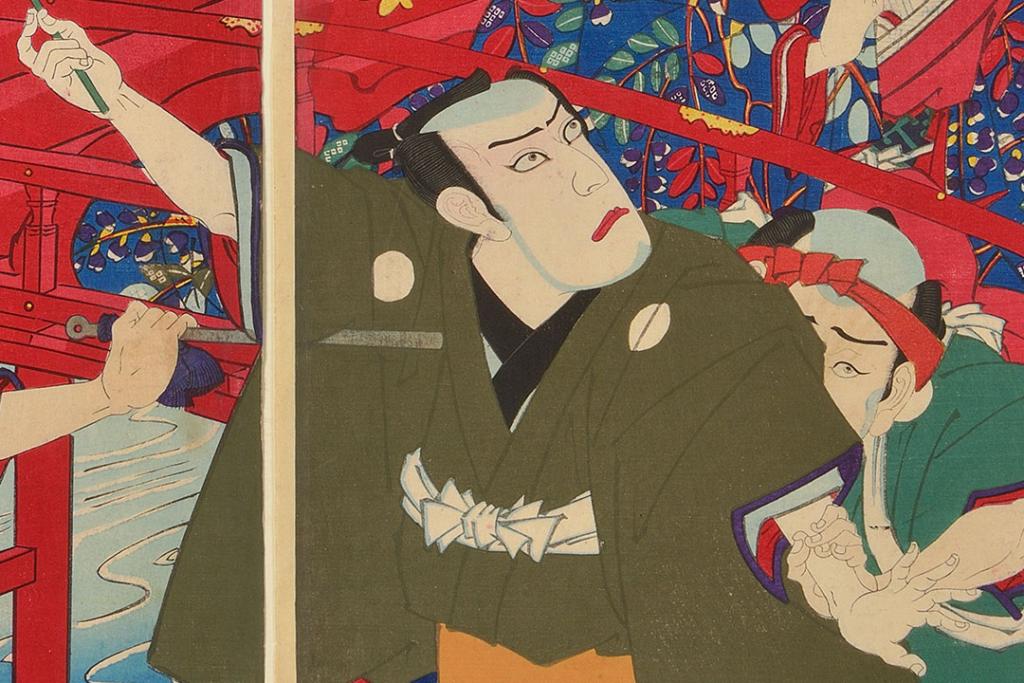
Narita, one of two international airports in Tokyo, sparked one of Japan's most protracted and violent political protests when it was built in the 1960s, because the land on which the airport was to be built belonged to farmers who were to be dispossessed of their fields. 17,000 protestors, drawn principally from left-wing student groups alongside more than 200 local farmers, battled daily with the police.
There were many political rallying cries among the Narita protestors, most appealing for justice and fairness. However there was one slogan that was unique and made an appeal to a much older tradition of folk protest harking back to the 17th century. It invoked a famous figure of peasant protest. The slogan called for courage and to fight on because:
"We are the descendants of Sogoro"
But who was Sogoro and what did he have to do with Narita?
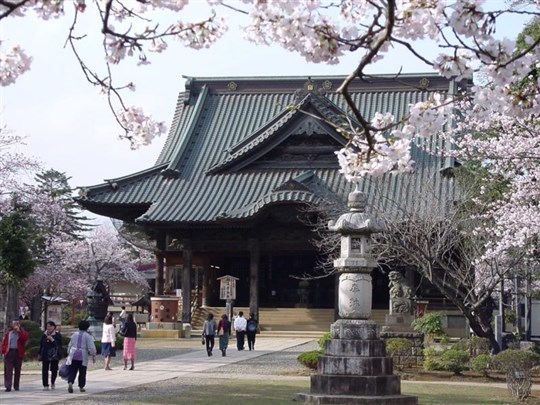
Sogoro was the legendary mayor or headman of nearby Kodzu village that was being overtaxed by their greedy local samurai lord. Peasants were starving. Scores of other villages in the same locality were also suffering. Sakura Sogoro was his fuller and more usual title. Sakura is the area of the lordship that he inhabited. He was also known by his family name, Kiuchi Sogoro.
In 1653 Sogoro is supposed to have petitioned the Shogun, Japan's military ruler, on behalf of his own and 388 other villages. He knew that his actions might gain redress, but he also knew that because he was questioning the hierarchical order of society - in effect attacking the rigidity of Japanese government by objecting to his superior's authority - he and his family would be punished by their lord. According to legend Sogoro was crucified in front of his wife and children, and then they were also executed.
Sogoro's existence may be mythic and there is no evidence of his life or death but he was seen from about the mid 18th century as the quintessential heroic peasant figure who had sacrificed his life for his fellows. A folk hero for many, he is revered as a quasi-divine figure among some, and his shrine is much visited.
Two woodblock triptychs showing episodes in the story of Sogoro are included in the Lady Lever Art Gallery’s Kunichika exhibition. They were both made in connection with the kabuki play ‘Self-Sacrificing Man Sogoro’ performed in Tokyo and starring the great kabuki actor Ichikawa Danjuro IX as the hero.
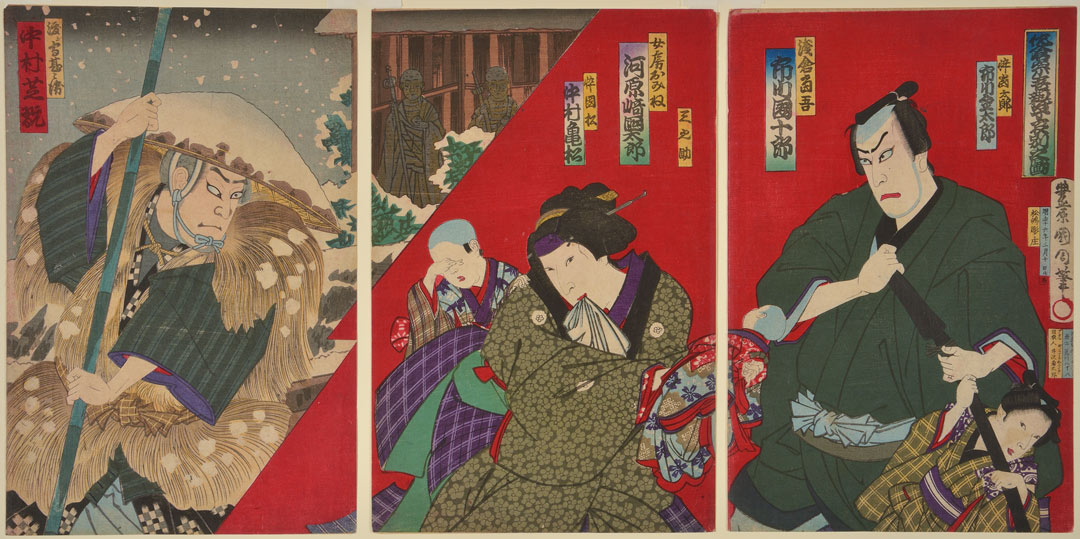
The first triptych print shows Sogoro and his family. On the left is Sogoro wearing a peasant straw hat and sedge coat, struggling through a snowstorm. In the background a building has two statue-like figures similar to those outside some Buddhist temples. On the right of the scene Sogoro’s wife and three children weep and one child pulls at Sogoro's clothing. The two incidents in this print are separated by a jagged zig-zag diagonal line isolating the flat red background of an interior space from a more open detailed snowy landscape outside.
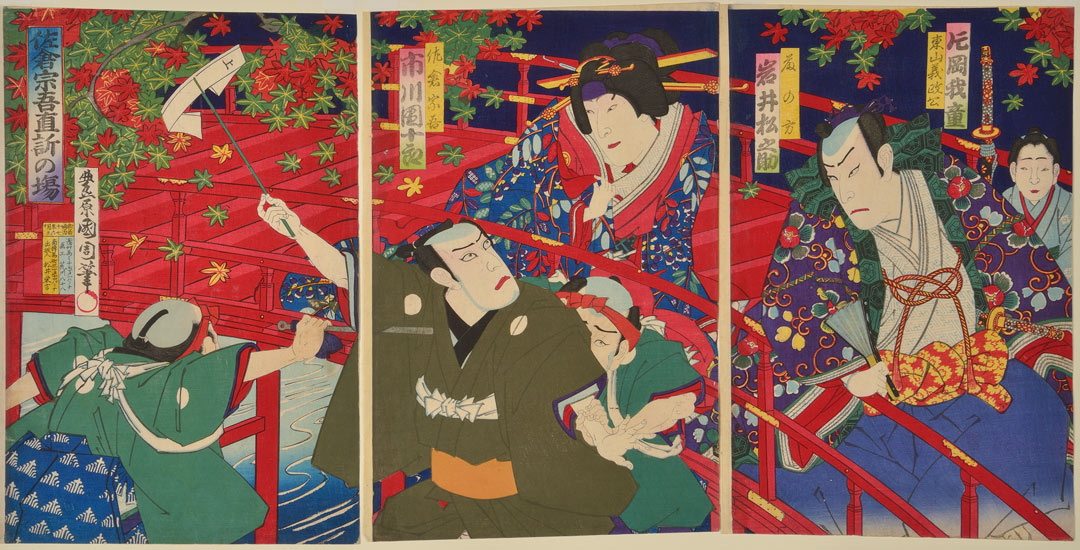
The second print shows Sogoro petitioning the Shogun. It is set in the grounds of a temple in Edo where the Shogun is visiting the shrine of his ancestors. It shows maple trees in autumn colours and a red painted wooden bridge. To kabuki theatre audiences this was a familiar setting - a clichéd image of a typical temple grounds and garden. The Shogun and his retinue are in rich clothing and Sogoro struggles with armed guards to deliver his petition on the forked stick that he holds aloft.
The kabuki play about Sogoro called 'Self-Sacrificing Man Sogoro' was first written and performed in 1851. At that time there had been considerable anxieties about staging it - not because the subject was potentially subversive but because the theatre owners feared that the peasant costumes would be too dull and a peasant plot might not be attractive to sophisticated urban audiences. However, they were wrong. The play was a smash hit, with a long run and continues to be a favourite among kabuki audiences today. Since 1851 it has been revived more than 250 times. It has been described as the first modern political kabuki play.
We sometimes think of Japanese prints as being mostly about landscapes but more than 80% of Japanese woodblock prints are linked to kabuki plays and actors. When in 1851 'Self Sacrificing Man Sogoro' was first performed at least 25 prints, possibly as many as 40, were made to coincide with the few weeks that the performances ran. Those which most closely relate to the later 1883 Kunichika pair were designed by Kunichika's teacher and master Utagawa Kunisada (1786 -1865), and several were also made by the print designer Utagawa Kuniyoshi (1798 -1861).
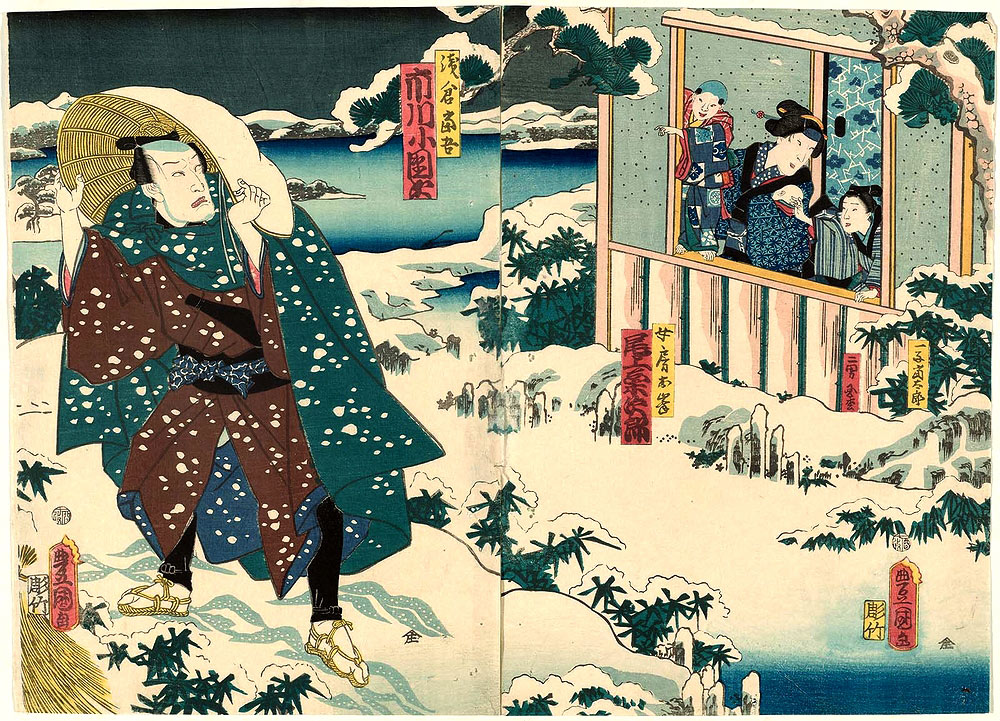
`
Two of the prints that connect with Kunichika's are this diptych (two panel print) from 1851 by Utagawa Kunisada and a triptych (three panel print) from 1861 by Utagawa Kuniyoshi. Both prints are, we assume, broadly like the stage scenery, setting and costumes of the 1851 performance, although the snowbound view by Kunisada also seems to be an attempt to portay Sogoro's leave-taking as it might have looked in a real landscape rather than on stage.
Both of Kunichika's prints owe some debt to these earlier images but there are also I think important differences. In Kunichika's petitioning the Shogun scene there are far fewer figures and Sogoro and the Shogun stare eyeball to eyeball one at the other. In both of Kunichika's prints I think there is a heightened pathos and emotional intensity as the viewer is invited to read the expressions on the actors’ faces rather than to take in a broader more distant view of the whole scene. We think of the ‘close up’ as a visual device used in film and its beginnings are dated from about 1916 onwards, but here we see I think something similar and much earlier.
In 1883 we see Kunichika trying for something new I think, a new focus. The spatial organisation, especially the splitting of Sogoro from his family, reflects a fashion that was becoming established in prints in the 1880s - using diagonal lines, with or without a jagged flash, to show incidents separated in time and space.
When I suggest that the Sogoro play was Japan's first political play it is not to imply that it is a protest play in the manner of Berthold Brecht, but its subject matter certainly included a serious questioning of hierarchical political power and a demand for justice. The values that Sogoro was ready to die for are grounded in compassion and fellow feeling, as well as collective solidarity. The great popularity of the Sogoro play since 1851 has in part been because of its continued modern topicality and relevance and its adaptability to various forms of protest against arbitrary power.
